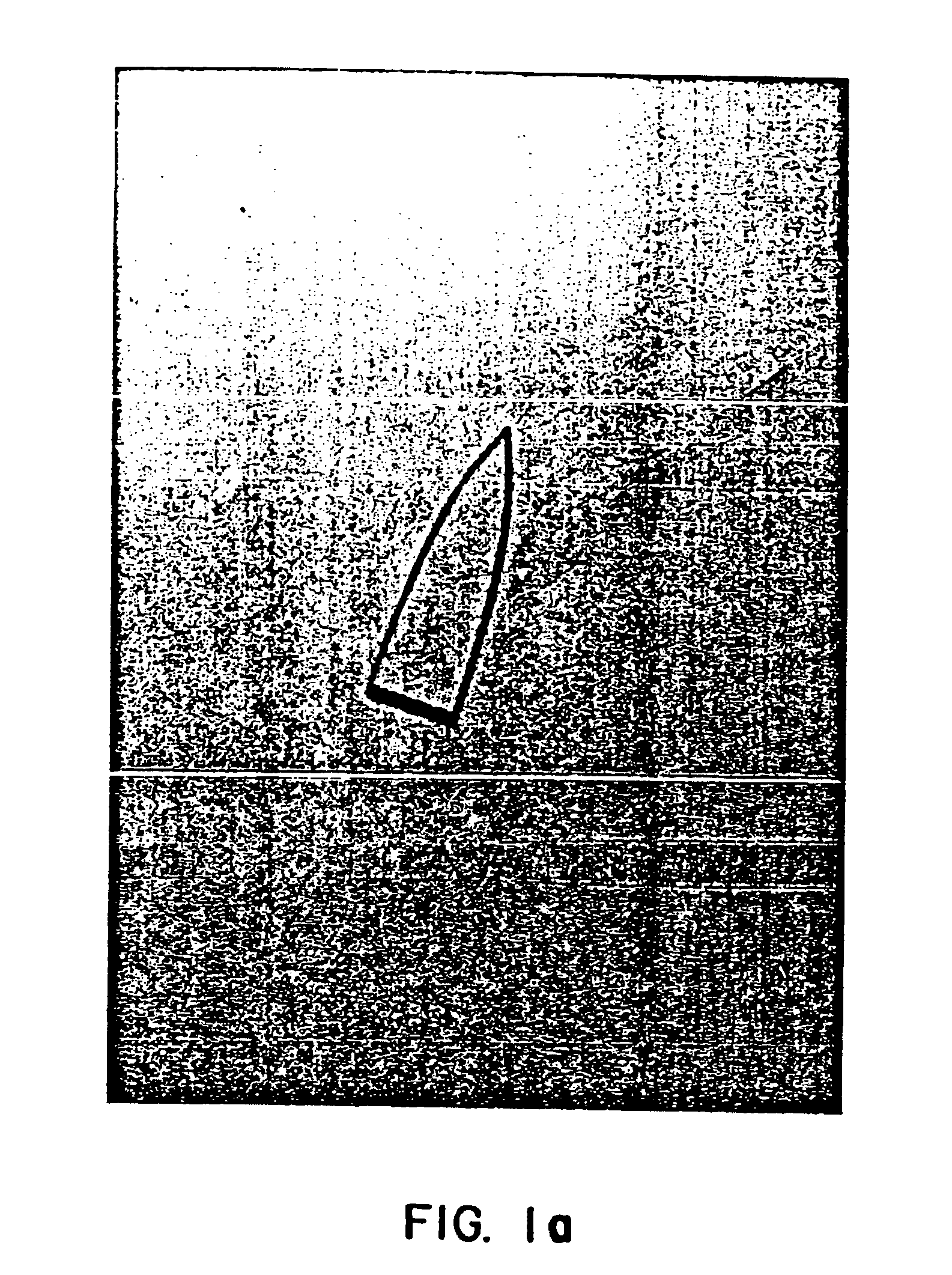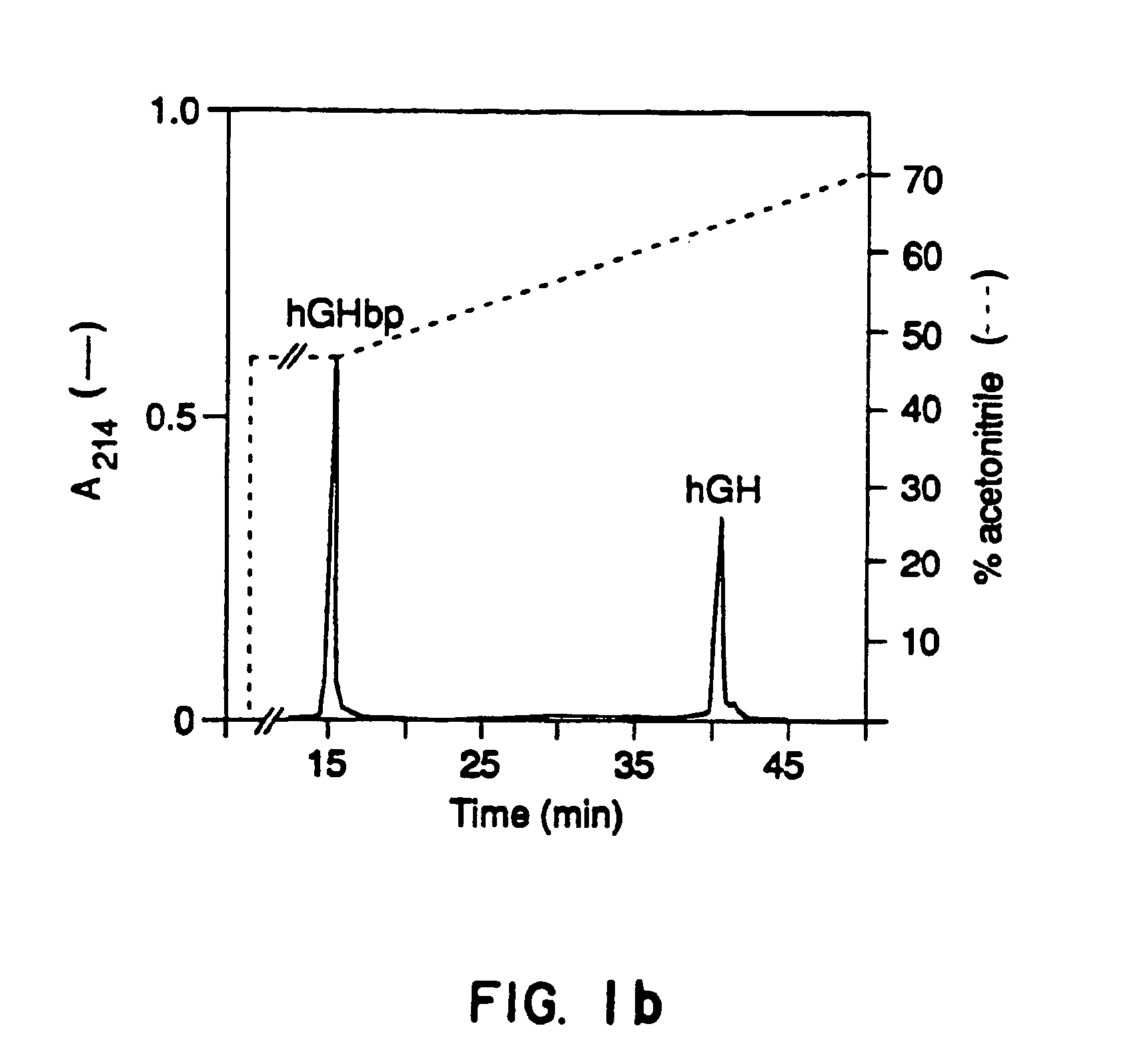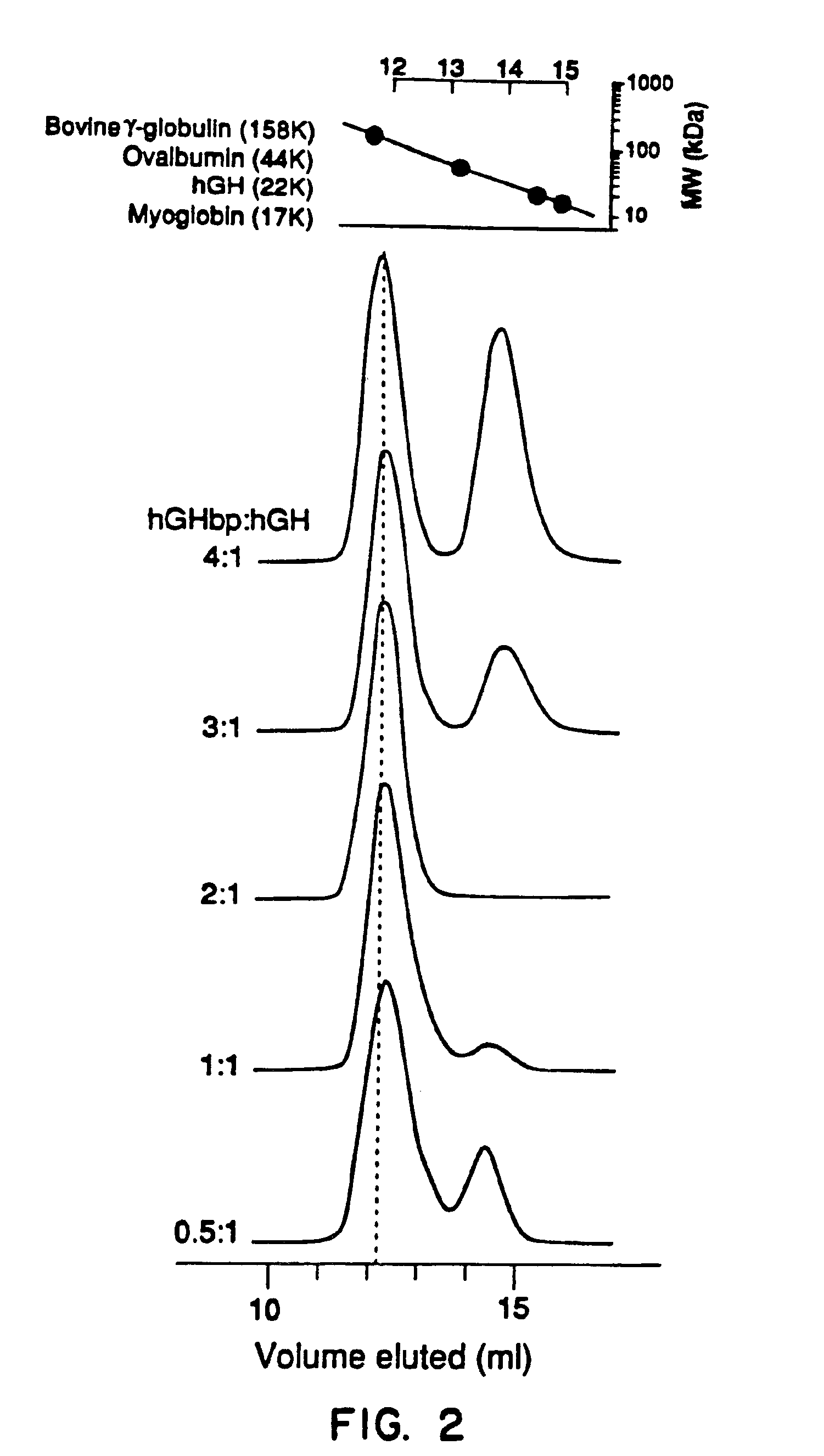Selecting ligand agonists and antagonists
- Summary
- Abstract
- Description
- Claims
- Application Information
AI Technical Summary
Benefits of technology
Problems solved by technology
Method used
Image
Examples
example 1
Structure of the hGH-Receptor Complex
[0123]The assay methods of the present invention are based upon the discovery of the hGH-receptor complex structure; that is, one hGH and two hGH receptors or binding proteins forming a stable complex that may be detected. These assay methods are exemplified by the hGH(hGHbp)2 complex assay methods.
Crystallization of the hGH-(hGHbp)2 Complex
[0124]Crystals of the complex between hGH (22 kDa) and the hGHbp (28 kDa) (FIG. 1a) were grown by vapor phase diffusion (A. McPherson, in Preparation and Analysis of Protein Crystals, John Wiley and Sons, New York, (1982)). The crystals diffract to at least 2.7 Å and belong to space group (P21212) with unit cell parameters of a=145.8 Å, b=68.6 Å, c=76.0 Å. The volume of the asymmetric unit of these crystals is such that the complex is unlikely to have the form of either hGH-hGHbp or (hGH-hGHbp)2. In particular, the solvent content would have to be too high (68%) for a 1:1 complex, or too low (32%) for a 2:2 co...
example 2
hGH Receptor Binding Sites
[0127]The nature of hGH binding sites for hGH receptor or hGH binding protein was characterized using antibody that blocked hGH binding sites for the receptor or binding protein. The evidence for two binding sites on the hGHbp is as follows.
[0128]The affinity of hGH for the hGHbp is typically measured by displacement of [125I]hGH from the hGHbp and precipitating the complex with an anti-receptor monoclonal antibody (Mab5) produced from glycosylated rabbit GH receptor (Bamard, R. et al., Endocrinology 115:1805-1813 (1984); Bamard, R. et al., Biochem. J. 231:459-468 (1985)). Using this assay, Scatchard analysis demonstrated that hGH and the hGHbp were capable of forming a 1:1 complex (Leung D. W. et al., Nature 330:537 (1987); Fuh G., et al., J. Biol. Chem. 265:3111-3115 (1990); Bamard, R., et al., Endocrinology 115, 1805-1813 (1984); Bamard, R., et al., Biochem. J. 231:459-468 (1985); Spencer, S. A., et al., J. biol. Chem. 263:7862-7867 (1988). Spencer, S. A...
example 3
hGH-Receptor Complex and Spectral Change
[0136]Binding of hGH to its receptor causes little spectral change in the components. To determine if the binding of hGH to the hGHbp causes large changes in secondary or tertiary structure of the components we investigated the change in the circular dichroic (CD) and fluorescence spectra upon complex formation Proteins were prepared for spectroscopy by dialyzing approximately 1.0 mg / ml protein in 0.01 M Tris pH (8.0) and 200 mM NaCl. After dialysis the solutions are filtered (0.22 μ,Millipore) and the absorbance spectrum was obtained. The spectra were corrected for light scattering (Shauenstein E., et al., J. Polymer Sci. 16:45 (1955)) and protein concentrations were determined by absorbance at 280 nm. The ε2800.1% for hGH is 0.82 cm−1 and 2.35 cm−1 for the hGHbp based on absorbance and compositional analysis of a pure sample. hGH exhibits a strongly α-helical CD spectrum (Bewley T. A., et al., Arch. Biochem. Biophys. 138:338-346 (1970)) char...
PUM
| Property | Measurement | Unit |
|---|---|---|
| Fraction | aaaaa | aaaaa |
| Fraction | aaaaa | aaaaa |
| Fraction | aaaaa | aaaaa |
Abstract
Description
Claims
Application Information
 Login to View More
Login to View More - R&D
- Intellectual Property
- Life Sciences
- Materials
- Tech Scout
- Unparalleled Data Quality
- Higher Quality Content
- 60% Fewer Hallucinations
Browse by: Latest US Patents, China's latest patents, Technical Efficacy Thesaurus, Application Domain, Technology Topic, Popular Technical Reports.
© 2025 PatSnap. All rights reserved.Legal|Privacy policy|Modern Slavery Act Transparency Statement|Sitemap|About US| Contact US: help@patsnap.com



